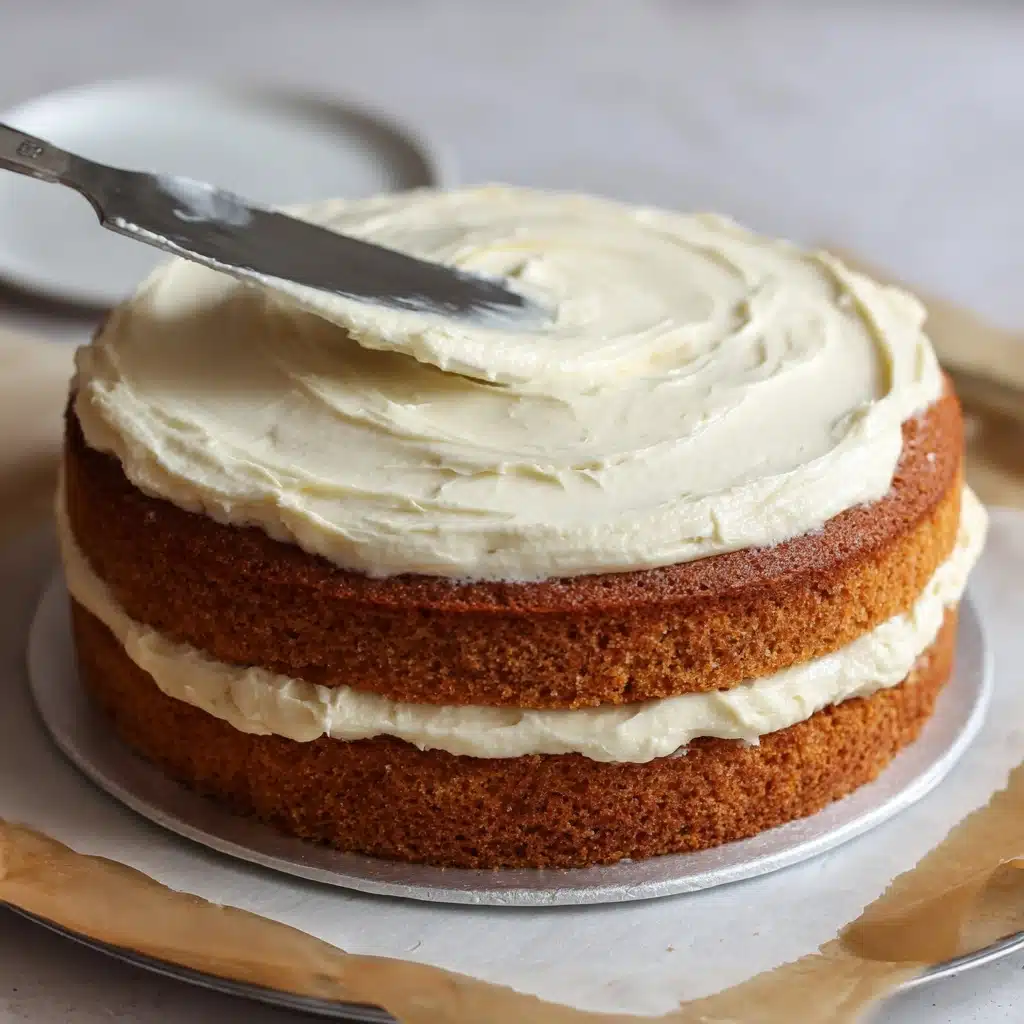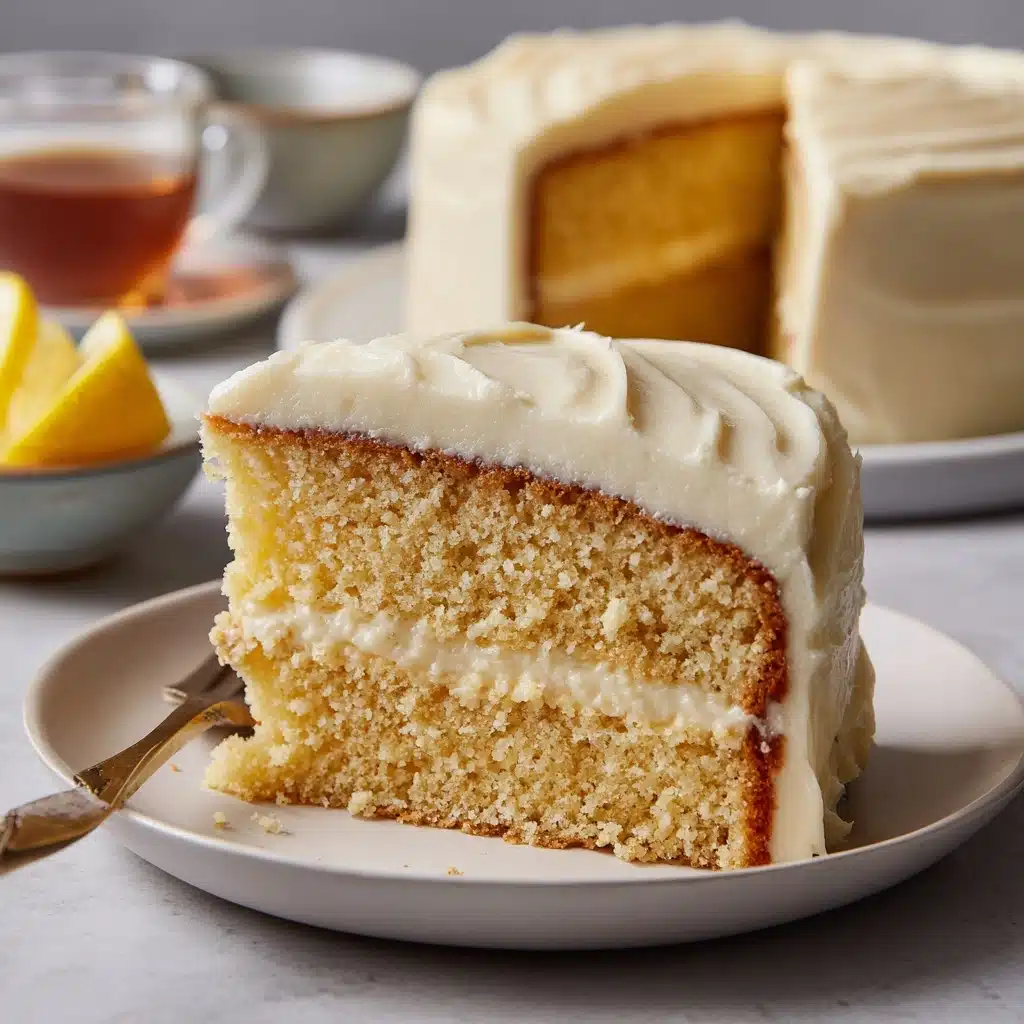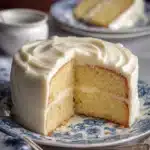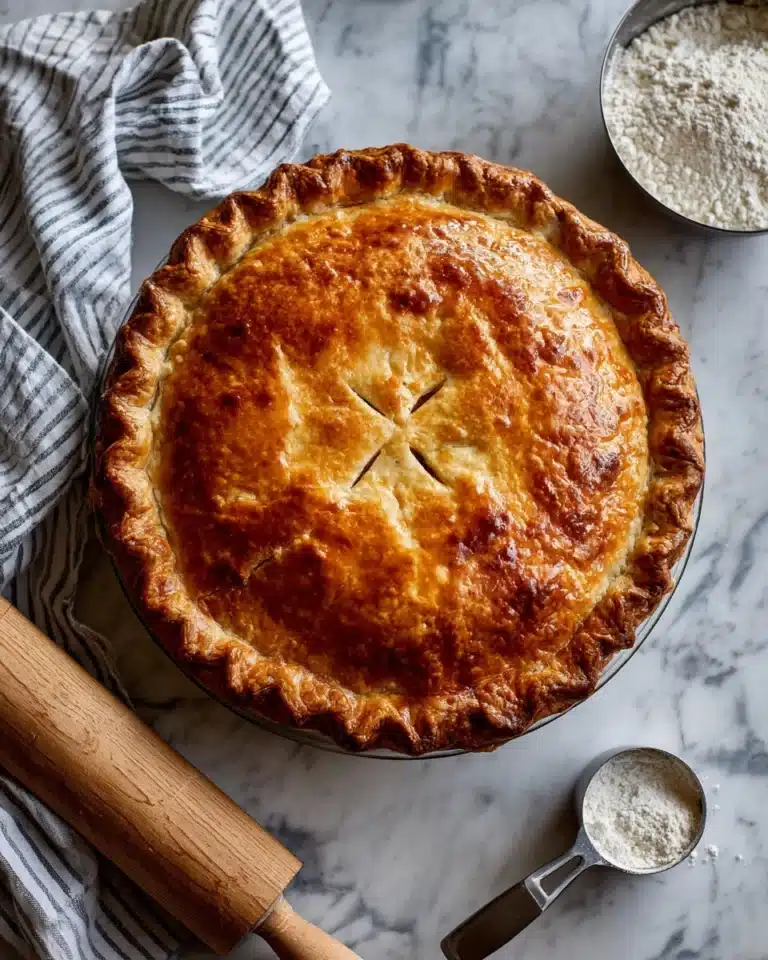If you’re looking to impress at your next gathering with a bake that’s as beautiful as it is delicious, this Lemon Lavender Cake fits the bill. Bright, zesty lemon mingles with delicate floral notes from dried lavender, all wrapped up in pillowy-soft cake layers and a lusciously creamy lemon buttercream. Perfect for birthdays, garden parties, showers, or just when you want a slice of serenity with your afternoon tea, Lemon Lavender Cake is a treat that feels both classic and fresh, bringing a little sunshine to every bite.

Ingredients You’ll Need
Every element of this cake — from the sunny citrus to the subtle, fragrant lavender — has a role to play. These ingredients are the heart of Lemon Lavender Cake, contributing flavor, texture, height, and that beautiful pale yellow hue that makes each slice a bit of edible art. Let’s break down what you’ll need and what makes each ingredient special.
- All-purpose flour (3 cups, 360g): Gives the cake structure while keeping it light and tender.
- Baking powder (2 1/2 teaspoons): Helps the cake rise for those fluffy, tall layers.
- Baking soda (1/2 teaspoon): Works with the lemon juice to create a soft crumb and subtle tang.
- Kosher salt (1/2 teaspoon): Balances the sweetness and enhances all the flavors.
- Sugar (2 cups, 400g): Sweetens the cake while adding moisture and supporting the tender crumb.
- Lemon zest (2 tablespoons, about 4 lemons): Packs in pure citrus flavor for a lovely lemony punch.
- Dried culinary lavender (1 tablespoon): Brings floral aroma; be sure to use culinary-grade lavender for safety and taste.
- Unsalted butter (1/2 cup, 113g, room temperature): Adds richness and structure for a moist, decadent cake.
- Vegetable oil (1/2 cup, 120ml): Keeps the cake soft, tender, and moist even after a few days.
- Large eggs (4, room temperature): Bind the ingredients and create a rich, springy texture.
- Vanilla extract (1 teaspoon): Rounds out the lemon and lavender flavors with warmth.
- Fresh lemon juice (1/3 cup, 80ml): Infuses brightness and a tangy kick into every bite.
- Whole milk (1 cup): Makes the crumb soft and smooth while enriching the flavor.
- Additional unsalted butter for frosting (1 1/2 cup, 3 sticks, room temperature): Essential for that dreamy, fluffy lemon buttercream.
- Powdered sugar (6 cups, 680g, for frosting): Dissolves easily to create a silky-smooth icing.
- Whole milk (1/3 cup, 80ml, for frosting): Adjusts the consistency of the frosting, making it spreadable and creamy.
- Lemon extract (1 tablespoon, for frosting): Dials up the citrus tang in the buttercream, tying the whole cake together.
How to Make Lemon Lavender Cake
Step 1: Prepare the Pans
Set yourself up for baking success by preheating your oven to 350°F and prepping two 8-inch round cake pans. Generously butter the insides, line the bottoms with parchment paper, and dust with flour. This triple-protection system ensures your Lemon Lavender Cake releases flawlessly, so every layer comes out whole and beautiful.
Step 2: Combine the Dry Ingredients
In a medium bowl, whisk together the flour, baking powder, baking soda, and salt. This blend keeps your cake even-textured and gives it the perfect soft bite, while the salt quietly amplifies all the cake’s other flavors.
Step 3: Infuse the Sugar with Lemon and Lavender
In your food processor, combine sugar, lemon zest, and dried lavender. Blitz until the lavender is finely ground and the zest is evenly distributed — this crucial step infuses the heart of your Lemon Lavender Cake with citrusy and floral notes before you even start mixing the batter.
Step 4: Cream the Butter, Oil, and Infused Sugar
In your stand mixer (or with a hand mixer), beat the butter, oil, and lemon-lavender sugar together on medium-high until it’s pale and billowy — about four minutes. This process whips air into the mixture, ensuring your cake bakes up ethereally light.
Step 5: Add Eggs and Vanilla
Add the eggs one at a time, mixing thoroughly after each, and then stir in the vanilla extract. Make sure to scrape the bowl so everything’s fully incorporated — you want your Lemon Lavender Cake to have a unified flavor and a perfectly smooth crumb.
Step 6: Combine Wet and Dry Mixtures
On low speed, add half of the dry mixture to the wet, mixing until just combined. Pour in the milk and lemon juice, blending on low until smooth. Then add the remaining dry ingredients, mixing until no dry spots remain — don’t overmix! A few lumps are totally fine and prevent a tough cake.
Step 7: Bake the Lemon Lavender Cake Layers
Divide the batter evenly between your prepared pans. Slide them into the oven and bake for 30 to 35 minutes. You’ll know they’re done when a toothpick comes out clean, the edges start to pull away, and the centers bounce back when gently pressed.
Step 8: Cool the Cakes Completely
Let the cakes rest in their pans for 15 minutes, then carefully turn them out onto a wire rack. Patience is key here — let them cool completely before you even think of frosting, so your buttercream doesn’t melt.
Step 9: Make the Lemon Buttercream Frosting
Beat the butter until smooth and creamy, then incorporate powdered sugar, half the milk, and lemon extract. Whip until light and fluffy, and add more milk if you need to achieve that dreamy, spreadable texture. Don’t rush the process; a thoroughly beaten buttercream is the secret to a flawless finish.
Step 10: Assemble and Frost
Place one cake layer right-side-up on your serving plate and lavish it with about half to one cup of frosting. Set the second layer upside-down for a smooth top. Check the cake is level before continuing. Spread a thin layer of frosting over the whole cake for the crumb coat, then refrigerate twenty minutes to set. After chilling, frost generously all over for that gorgeous, bakery-style finish.
How to Serve Lemon Lavender Cake

Lemon Lavender Cake Garnishes
The simplest way to elevate the presentation is with a sprinkle of extra lemon zest and a few whole lavender buds scattered over the top. Thin curls of candied lemon or a twist of lemon peel also look stunning. If you want to go all out, try finishing with edible flowers or a dusting of powdered sugar for that magical, tea-party vibe.
Side Dishes
Lemon Lavender Cake pairs beautifully with a scoop of vanilla ice cream or a spoonful of lightly whipped cream. For a more sophisticated pairing, serve with fresh berries — their sweetness and tartness echo the cake’s flavors perfectly. If it’s a springtime brunch, a crisp glass of Prosecco or a floral-infused iced tea makes it extra special.
Creative Ways to Present
Slice and stack the cake in layers in clear glass trifle bowls for a stunning, portable dessert. Serve petite squares as part of a dessert buffet, topped with microgreens or edible petals for a whimsical look. You can even bake the batter as cupcakes and swirl the frosting into tall peaks — ideal for parties or picnics.
Make Ahead and Storage
Storing Leftovers
Your Lemon Lavender Cake will stay fresh and moist for up to four days when kept in a cake saver at room temperature. Cover any cut edges with plastic wrap or parchment to keep them from drying out. Slices can also be kept covered on a plate if you’re nibbling throughout the week.
Freezing
Both the unfrosted cake layers and frosted cake can be frozen. To freeze layers, wrap tightly in plastic and foil, then thaw at room temperature before assembling. For frosted cake, wrap the whole cake or individual slices in plastic wrap and freeze for up to two months, allowing them to thaw overnight before enjoying.
Reheating
If you prefer your Lemon Lavender Cake slightly warm, microwave individual slices for 5-10 seconds — just enough to take the chill off and relax the frosting. Avoid overheating, as it can separate the buttercream or dry out the crumb. For best results, let refrigerated cake come to room temperature before serving.
FAQs
Can I use fresh lavender instead of dried?
For best (and safest) results, use dried culinary lavender, which is properly dried and safe for baking. Fresh lavender can taste much more intense and sometimes even bitter, so it’s tricky to substitute. If you only have fresh, use half the amount and test the flavor in a small batch first.
What if I don’t have a food processor for the sugar?
No worries! You can use a mortar and pestle to crush the lavender with some sugar, then rub the lemon zest into the mixture with your fingers. This will still infuse the sugar with lots of flavor for your Lemon Lavender Cake.
Can I make the cake gluten-free?
Yes, you can substitute a 1-to-1 gluten-free flour blend for the all-purpose flour. The texture might be a bit more tender, but the lemon and lavender flavors will still shine through.
Is this cake overly floral?
Not at all! When properly measured, lavender adds a gentle, fragrant note without overwhelming the bright lemon flavor. If you’re sensitive to florals, you can reduce the lavender by a teaspoon, but most people find the combination delightful and balanced.
Can I turn this recipe into cupcakes?
Absolutely! Divide the batter into lined muffin tins, filling each about two-thirds full. Bake at the same temperature for around 16-20 minutes, checking for doneness with a toothpick.
Final Thoughts
If you love sunshine on a plate and crave a dessert that’s both stunning and crowd-pleasing, don’t hesitate to try this Lemon Lavender Cake. It’s a true showstopper for any celebration — or just because you deserve a beautiful slice any day of the week. Your kitchen is about to smell heavenly!
PrintLemon Lavender Cake Recipe
Indulge in the delicate flavors of lemon and lavender with this exquisite Lemon Lavender Cake. Moist and fragrant layers of cake are paired with a luscious lemon buttercream frosting, creating a delightful treat perfect for any special occasion.
- Prep Time: 95 mins
- Cook Time: 33 mins
- Total Time: 2 hrs 8 mins
- Yield: 1 (8-inch) cake
- Category: Dessert
- Method: Baking
- Cuisine: American
- Diet: Vegetarian
Ingredients
Lemon Lavender Cake Layers:
- 3 cups (360g) all-purpose flour
- 2 1/2 teaspoons baking powder
- 1/2 teaspoon baking soda
- 1/2 teaspoon kosher salt
- 2 cups (400g) sugar
- 2 tablespoons lemon zest (from about 4 lemons)
- 1 tablespoon dried culinary lavender
- 1/2 cup (113g) unsalted butter, room temperature
- 1/2 cup (120ml) vegetable oil
- 4 large eggs, room temperature
- 1 teaspoon vanilla extract
- 1/3 cup (80ml) fresh lemon juice
- 1 cup whole milk
Lemon Buttercream Frosting:
- 1 1/2 cup (3 sticks) unsalted butter, room temperature
- 6 cups (680g) powdered sugar
- 1/3 cup (80ml) whole milk
- 1 tablespoon lemon extract
Instructions
- Preheat the oven to 350°F. Prepare the pans by greasing and lining with parchment paper.
- Combine the dry ingredients: Whisk together flour, baking powder, baking soda, and salt.
- Infuse the sugar: Process sugar, lemon zest, and lavender in a food processor until finely ground.
- Beat the butter, oil, and sugar: Beat until pale and fluffy.
- Add the eggs and vanilla: Beat in eggs one at a time, then stir in vanilla.
- Combine the wet and dry: Alternate adding flour mixture and liquids, mix until just combined.
- Bake the cake layers: Divide batter between pans and bake until done.
- Cool the cakes: Let cool completely before frosting.
- Make the frosting: Beat butter until smooth, then add sugar, milk, and lemon extract.
- Assemble the cake: Layer cakes with frosting in between and on top.
- Frost the cake: Apply crumb coat, refrigerate, then apply final frosting layer.
Notes
- For a stronger lavender flavor, you can steep dried lavender in warm milk for 30 minutes and strain before using.
- Ensure all ingredients are at room temperature for best results.
- You can decorate the cake with additional lemon zest or fresh lavender flowers for a beautiful presentation.
Nutrition
- Serving Size: 1 slice
- Calories: 385
- Sugar: 42g
- Sodium: 190mg
- Fat: 18g
- Saturated Fat: 10g
- Unsaturated Fat: 6g
- Trans Fat: 0g
- Carbohydrates: 54g
- Fiber: 1g
- Protein: 3g
- Cholesterol: 75mg









https://shorturl.fm/GABN6
https://shorturl.fm/xV41Y